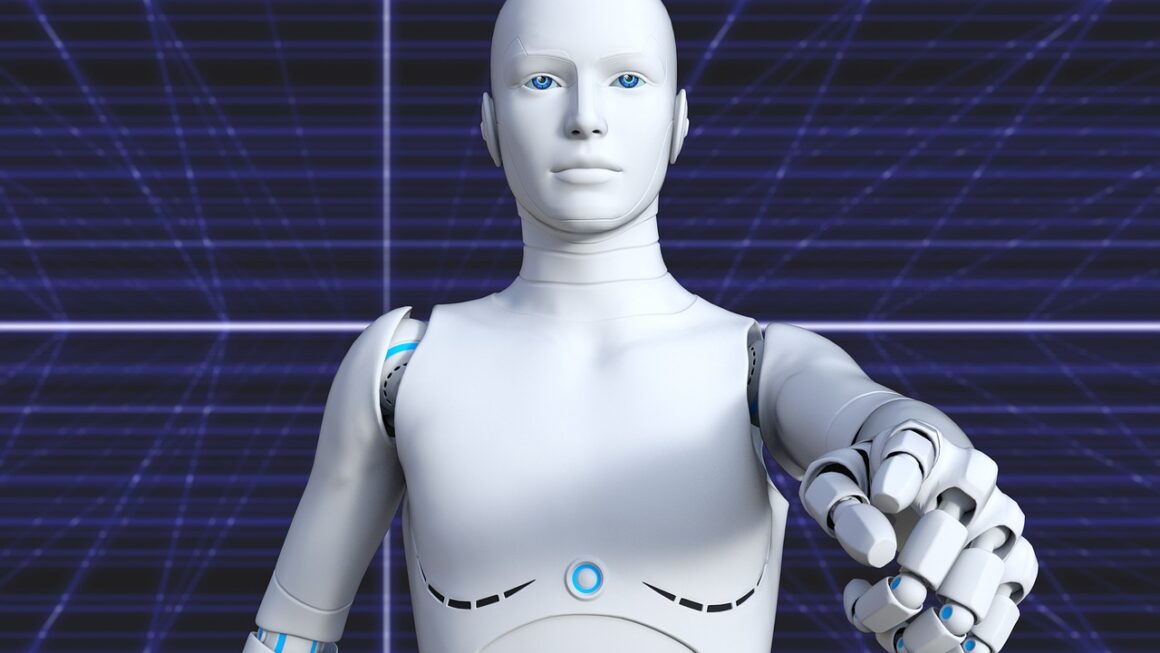Reinforcement Learning (RL) is rapidly transforming industries, from gaming and robotics to finance and healthcare. Imagine training an AI agent to master a complex game like Go, navigate a self-driving car through busy city streets, or even personalize medical treatments for patients. That’s the power of reinforcement learning – a paradigm where agents learn through trial and error to make optimal decisions in dynamic environments. This blog post will dive deep into the world of reinforcement learning, exploring its core concepts, algorithms, applications, and future potential.
What is Reinforcement Learning?
Core Concepts
Reinforcement learning is a type of machine learning where an agent learns to make a sequence of decisions by interacting with an environment. The agent receives rewards or penalties based on its actions, and its goal is to maximize the cumulative reward over time. Unlike supervised learning, which relies on labeled data, RL agents learn from experience through trial and error. The key components of an RL system are:
- Agent: The decision-maker that interacts with the environment.
- Environment: The world the agent operates in, providing observations and accepting actions.
- State: The current situation of the environment.
- Action: The choice the agent makes in a given state.
- Reward: A scalar value that indicates the immediate consequence of an action.
- Policy: A strategy that the agent uses to decide which action to take in a given state. It can be deterministic (always choosing the same action) or stochastic (providing a probability distribution over actions).
- Value Function: Estimates the expected cumulative reward the agent will receive starting from a particular state (or state-action pair) following a specific policy.
How Reinforcement Learning Works
The RL process unfolds as follows:
Practical Example: Training a Self-Driving Car
Consider training a self-driving car using reinforcement learning. The environment is the road, including traffic signals, other vehicles, and pedestrians. The agent is the car’s control system.
- State: The car’s current location, speed, and surrounding conditions (e.g., distance to other cars, traffic light status).
- Action: Steering, acceleration, and braking.
- Reward: Positive rewards for smooth driving, following traffic rules, and reaching the destination safely. Negative rewards for collisions, speeding, and running red lights.
Through countless simulations and real-world testing, the RL agent learns to navigate roads, avoid obstacles, and obey traffic laws, ultimately developing a robust self-driving policy.
Types of Reinforcement Learning Algorithms
Model-Based vs. Model-Free
- Model-Based RL: The agent attempts to learn a model of the environment, predicting how the environment will change in response to its actions. This model is then used to plan future actions. Example: Dyna-Q algorithm. A benefit is that once the model is learned, it can be used to simulate different scenarios without direct interaction with the real environment. A drawback is that learning a perfect model can be difficult, leading to suboptimal performance.
- Model-Free RL: The agent directly learns the optimal policy or value function without explicitly learning a model of the environment. This approach is often simpler to implement but can be less efficient in certain scenarios. Examples: Q-Learning, SARSA. These methods are particularly useful when the environment is complex or unknown.
Value-Based vs. Policy-Based
- Value-Based RL: The agent learns the optimal value function, which estimates the expected cumulative reward for each state or state-action pair. The policy is then derived from the value function. Examples: Q-Learning, Deep Q-Networks (DQN). A major advantage is their stability, but they can struggle with continuous action spaces.
- Policy-Based RL: The agent directly learns the optimal policy, without explicitly learning a value function. Examples: REINFORCE, Proximal Policy Optimization (PPO). Policy-based methods are generally better at handling continuous action spaces and can learn stochastic policies, but can be more unstable and have higher variance.
On-Policy vs. Off-Policy
- On-Policy RL: The agent learns a policy by following it. The policy that is used to generate experience is also the policy that is being improved. Example: SARSA. A key advantage is that it ensures the learned policy is aligned with the current behavior.
- Off-Policy RL: The agent learns a policy by observing the actions of a different policy. The policy used to generate experience is different from the policy being improved. Example: Q-Learning. Off-policy methods are often more sample-efficient because they can learn from past experiences generated by other policies.
Applications of Reinforcement Learning
Reinforcement learning has found applications in various fields, demonstrating its versatility and power.
Gaming
- AI Opponents: Training AI agents to play games at superhuman levels, as demonstrated by AlphaGo’s victory over a world champion Go player.
- Game Design: Automatically generating game content and balancing game difficulty.
- Personalized Gaming Experiences: Tailoring game challenges and rewards to individual player preferences.
Robotics
- Robot Control: Enabling robots to perform complex tasks such as grasping objects, navigating environments, and performing assembly operations.
- Autonomous Navigation: Developing self-driving cars and drones that can navigate complex environments.
- Human-Robot Interaction: Designing robots that can collaborate with humans in a safe and efficient manner.
Finance
- Algorithmic Trading: Developing trading strategies that maximize profits while minimizing risks. For example, RL can be used to optimize portfolio allocation based on market conditions.
- Risk Management: Identifying and mitigating financial risks by learning from historical data.
- Fraud Detection: Detecting fraudulent transactions by learning patterns of suspicious behavior.
Healthcare
- Personalized Treatment Plans: Developing individualized treatment plans for patients based on their specific conditions and responses to treatment. For example, RL can be used to optimize drug dosages for cancer patients.
- Drug Discovery: Accelerating the drug discovery process by identifying promising drug candidates.
- Resource Allocation: Optimizing the allocation of healthcare resources, such as hospital beds and staff, to improve patient outcomes.
Challenges and Future Directions
Challenges
- Sample Efficiency: RL algorithms often require a large amount of data to learn effectively, which can be a bottleneck in real-world applications. Techniques like imitation learning and transfer learning are used to address this challenge.
- Exploration vs. Exploitation: Balancing the need to explore new actions to discover better strategies with the need to exploit known good actions to maximize rewards is a fundamental challenge in RL.
- Reward Shaping: Designing appropriate reward functions that guide the agent towards the desired behavior can be difficult. Poorly designed reward functions can lead to unintended or suboptimal behavior.
- Stability: Some RL algorithms can be unstable and sensitive to hyperparameter tuning.
- Safety: Ensuring that RL agents behave safely and avoid harmful actions is crucial, especially in safety-critical applications.
Future Directions
- Hierarchical Reinforcement Learning: Breaking down complex tasks into simpler subtasks, enabling agents to learn more efficiently.
- Meta-Reinforcement Learning: Training agents that can quickly adapt to new environments and tasks.
- Multi-Agent Reinforcement Learning: Training multiple agents to cooperate or compete with each other.
- Combining RL with other Machine Learning Techniques: Integrating RL with deep learning, supervised learning, and unsupervised learning to create more powerful and versatile AI systems.
- Explainable Reinforcement Learning: Developing methods to understand and explain the decisions made by RL agents, increasing trust and transparency.
Conclusion
Reinforcement learning is a powerful and versatile machine learning paradigm with the potential to revolutionize numerous industries. From training AI agents to master complex games to developing self-driving cars and personalized medical treatments, RL is already making a significant impact. While challenges remain, ongoing research and development are paving the way for even more exciting applications of RL in the future. As RL continues to evolve, it will undoubtedly play an increasingly important role in shaping the future of artificial intelligence. Embracing RL now can unlock significant advantages in efficiency, automation, and innovation across various domains.




